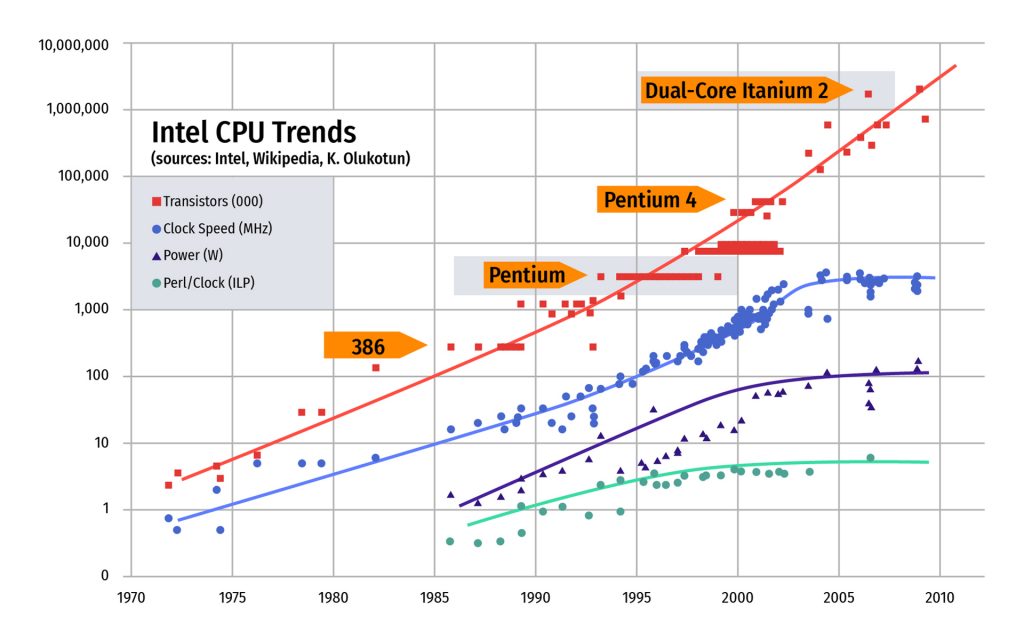Into
Golang, the Go programming language, and Google Language are the names of quite a young programming language introduced by Google in 2009. This multithreaded compiled language was conceived as a substitute for both C++ and Java. The creators seemed to make the programmer routine simpler with Go. Moreover, there was an idea to move some other mature languages (like PHP) aside as well.
Go keeps gaining popularity since both Google and a dedicated open-source community of the Gophers (an official symbol of Go is a gopher) make a lot of efforts to develop the language.
However, it is barely worth considering Go a killer language capable of eliminating other programming languages: neither C++ nor Java can go to waste. Instead, Go is carving its own niche on the market. The language is certainly good for system apps, automation utilities, network services, and server-side development.
Besides, many programmer positions on the labor market are marked with “…not against learning Go” by employers. It means many software companies are willing to educate newcomers in Golang development amid the actual lack of Go specs.
Companies know well why they go to Go (pardon the pun). Large enterprises are looking for the ways to replace old languages with Go in their services to make both processes faster and hardware consumption lower. Smaller companies use Go for back-end development usually.
Go is still remaining an interest-inducing subject in the realm of software development. Where to use Golang and what you can do with Golang in your development practice are the issues we are trying to address in the present post. No “Hello world” tutorial in Go will appear in it, however. But first things first.
What Is Golang: Exploring The Roots
To figure out why new programming languages in general and Golang, in particular, keep appearing in software development the situation in the present computer hardware-software needs to be analyzed.
1. Technical-&-historical Impetus
Two cult figures in computer science Robert Pike and Ken Thompson (former programmers at legendary Bell Labs) have created Golang in the attempt to combine the ease of learning inherent in Python with the fast executability of C/C++. But why? What did the two coding dinosaurs lack in the existing programming languages? If they introduced a solution there had to be a problem.
And the problem existed in the certain hardware limitations the computer industry started facing in those days. The famous Moore’s Law claiming that the number of transistors in a circuit should double every two years has reached its physical limit. The processing power stopped scaling up at any considerable pace. Even multi-core processors could not provide any significant increase in computing power. Neither adding more cores to processors nor increasing their cache could change the situation.

Pike and Thomson were, probably, realizing that the way out was not in hardware. To increase the performance some improvements in software should be made. The concept of multiple threads going in parallel was known before Golang but Pike and Tompson decided to put the idea in practice with full force. The thing was that the majority of existing programming languages had their roots in the single-threaded paradigm of the last century. They supported multi-threading, of course, but the efficiency of the resulting solutions leaves much to be desired.
2. The Way of Golang
That was the right time for Golang to appear: multi-core processors were already widespread in 2009. The hardware trend of adding more cores will go on most likely. That’s why both software applications and the programming languages in which the apps are written should follow concurrency to be scalable however many cores might appear in processors.
How does Go meet the concurrency? Instead of threads, Go has the Goroutines myriads of which can start simultaneously since only 2 KB memory is consumed by one goroutine. Goroutines use channels to communicate with each other via inbuilt primitives. And they stop consuming memory when the work is done. Hence, Golang executes concurrency in an elegant manner outperforming Java and C/C++ in such an aspect.
Another characteristic of Go that makes this language pretty appropriate for interacting with hardware directly is its performance. In contrast to higher-level languages such as Python, for instance, Golang does not need to be interpreted. Processors understand binary code and Go skips the stage of virtual machines that have to turn “human” code into binaries. The Golang coding language is compiled by nature that provides its performance to be as high as lower-level languages such as C/C++ have. But the advantages of Go don’t end there.
Benefits of Golang Development
The fact that Golang belongs to Google puts a special mark on this language. This is about large corporations when many people need to work on the same project together. That’s why Go is conceived as an easy-to-learn language that can be quickly grasped by a large group of developers (oftentimes not very skilled ones) to be able to develop some applications collaboratively.
1. Syntax
The simple and clear syntax of Go allows programmers to use neither external standards nor third-party comments to understand each other. The simplified syntax helps both write your own code and read the code written by someone else.
Many developers compare Golang with other languages: it sounds more attractive when you need only 25 keywords in Go in contrast to 67 ones in PHP, for example. An educational stimulus is available in it since the fast studying of Go can shift your focus from Golang as such to programming as a whole.
There is a flip side of simple syntax, however. The low learning threshold leads to an assumption that many low-skilled coders who don’t care about the quality of their products can appear on the market. Something similar happened with PHP in the early 2000s. But time has put things in order finally. Numerous PHP frameworks available today prevent “dropouts” from affecting the labor market. Besides, as it is mentioned above, many software companies educate their staff in Go to keep Golang development at a high level.
2. Collaboration
Teamwork is a key factor of Golang development. It is not dogma, however: you can write code in Go on your own. But many companies such as CrowdStrike, for example, are practicing a corporate transition to Golang to increase the pool of their developers in the future.
The collaborative thrust of Go is supported by numerous decent libraries enabling developers to fulfill tasks of any complexity. Even the standard Go library alone enables achieving a lot. Besides, effective overlapping with libraries in the C language takes place. Moreover, many developers suppose that Go libraries are just slightly wrapped C libraries.
Anyhow, the collaborative focus of the Go programming language is clear for large enterprises: Google, BBC Worldwide, Dropbox, eBay, Yahoo, DigitalOcean, as well as many other corporations are using Golang in their projects.
3. Performance
Since Golang is a compiled programming language an application written in Go can be developed very quickly. Having a straightforward static typing that is similar to the one inherent in Pascal, Go, at the same time, can boast better applicability – a feature it shares with Python. The fast performance of Golang is complemented by multi-platform support. This marvelous combination of Golang features allows both humans (programmers) and hardware (processors) to benefit from Go.
Golang programming is irrelevant to whether you create a large project or a small one. Go works well here and there. The Go-based apps have relatively short time-to-market periods that increase the feasibility of Golang development in general. Besides, the so-called robust software that should be extremely reliable seems to follow both the structure of Golang and its performance capabilities.
4. Tools
A native toolkit that consists of various peculiar instruments is available in the Golang programming language. One of the tools “go fmt” helps standardizing your code. Another one “go vet” can find mistakes in your code. We are going to mention some other specific tools of Go to show what the creators of Golang have done to simplify coding in Go especially for newbies.
Even school-aged kids can develop quite complicated programs in Go after a brief training in this language. There is a story on the Internet about a group of 12-year-old guys who have created a Mandelbrot’s fractal generator in Golang after just a 3-hour training. Even if the story is a myth, the convenience of Golang for developers is far from wishful thinking. The following capabilities of Golang prove this clearly:
- Automation of such routine processes as memory management and garbage collection allows programmers to focus on business logic and architecture – the compiler takes over all routines;
- Automated creation of documentation is executed with the “godoc” command which can find all necessary comments to create a tutorial for a program;
- The special tool “gofix” scans your code to explore obsolete syntax remaining after the Go evolution moves forward;
- Numerous testing tools facilitate Golang development to avoid third-party tests almost completely. “Golint” makes recommendations based on the official documentation (Effective Go and CodeReviewComments), “gosimple” simplifies cumbersome syntax, “gas” explores vulnerabilities (SQL injection, insecure hash values, and the like). Besides, there is a special utility that finds “dead code” – idle pieces of code that are available but not in use;
- If your program either consumes a lot of memory or overloads processors it is worth assessing the situation through a special text report – a profile. Profiles of various pieces of code appear thanks to the special Go package “pprof” that works via the “go tool pprof” command-line tool. The “graphviz” utility provides visualization of the profiles.
- Golang would hardly claim to be a low-level programming language without the ability to work with memory directly. The “unsafe” package is available in Go for such a purpose.
What Can You Do With Golang?
Addressing the question of where Golang is used it would be reasonable to go back to the origin of this programming language. It has appeared from a corporate paradigm. Large enterprise systems seem to match the capabilities of Golang best, therefore. This is about back-end development mostly. Even though you can create a user interface with Go, the corporate background of the Golang programming language suggests using Go where it can bring the largest benefits.
Many Go developers share their experience in the context of the specific software they create with Golang. A significant share of their apps belongs to various subcomponents of giant corporate platforms akin to Management Systems (Property Management Systems, Content Management Systems, Whatever-Else Management Systems – you name them). Their use cases are numerous:
- monitoring applications,
- notification services,
- reporting tools,
- various command-line utilities,
- storage systems,
- reverse binding apps,
- sandbox-specific software (Docker, Kubernetes),
- teamwork schedulers,
- geofence services (Uber),
- chat rooms (Twitch),
- API automations (Dailymotion),
- memcache client libraries (Dropbox).
In other words, highly scalable network services, combinations of microservices, heavily loaded administration systems, and various applications for background batch processing constitute the area where the Golang programming language is definitely worth using.
Summary
The Golang programming language is fast and productive like C/C++ and Java. At the same time, it is easy-to-learn like Python. The growing open-source community of experienced Gophers is always here to support newcomers. Both Google and other large corporations appreciate Go very much to keep this language evolving further on.
Was the creation of Golang an attempt to recalibrate the entire software development industry with another silver-bullet language? The available use cases suggest that it wasn’t. But both the idea behind Golang and its implementation enable everybody in software development to benefit from the language created for the current multi-core hardware paradigm.
Contact us to get consulted on which part of your project is worth to be developed with Go. Our professional team has first-hand experience in Golang programming.




